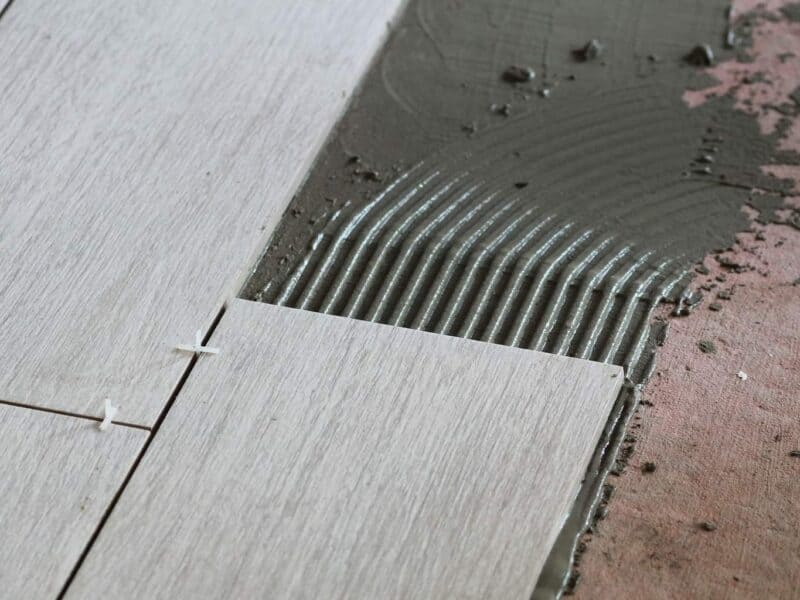
One of the reasons why laminate flooring has become so popular recently is that it’s easy to fit, at least compared to putting down a real wooden floor. There are few things that can catch you out, but if you follow our simple guide you won’t go wrong.
The tools you’ll need
A hammer and a few nails might come in handy for some of the niggly bits, and you’ll also need them for putting skirting or trim around the edge when the floor is all laid. Apart from that, the two things that will need particular tools and some skill are accurate cutting and getting the boards clamped together.
As far as the cutting goes, a good tenon saw will do, with a carpenter’s rule to make straight cuts. A mitre saw is excellent as long as the cage is wide enough for the boards to fit inside it – check before you buy. A useful tool is a tile gauge which can be used to transfer tricky edge profiles to the boards.
Click-fit or tongue and groove?
If the laminate flooring you have bought is of the click-fit variety then that should be all you need. But if you are fitting boards that are simply tongue and groove, like many engineered wood boards, then you would be well-advised to get a “puller”.
This is a flat crowbar with a specially shaped end that hooks under the edge of a board without damaging it. The other end is an upturned flat edge that can be hammered to pull boards tight. This is invaluable for the last few boards where you won’t have space to swing a hammer, because of the proximity of the wall.
Preparation
It’s important to make sure the surface you’re laying the boards on is clean and free of any obstructions. On a wooden floor make sure the nail heads are all hammered down. Cut and lay the appropriate underlay to shape and put that down first. Then start at the corner furthest from the door and lay the first board.
Don’t push boards too tightly up against the edges. Laminate flooring needs room to expand as the temperature and humidity changes so there should be at least a half a centimetre at each edge (the board instructions will tell you the manufacturer’s recommendation).
Some board packs will come with spacers to hold boards in place, you can buy them from DIY shops, or use off-cuts of board as you go, as long as they aren’t too thick.
Cutting to size
When you get to the end you’ll obviously have to cut a board to fit and there’s a neat trick to getting that right first time. Take the board you are going to cut, turn it round 180 degrees and lay it under the last board you laid. Then draw a line along the end of that board on the one that’s going to be cut.
This is easier to demonstrate than it is to write, so try it a few times without cutting, make the line then offer the board up to see if the line is in the right place, or measure it to see if the cut board would fit in place. Only when you’re sure, make the cut.
Carry on laying
Once you’ve put the cut piece in place, use the spare to start the next row. This is the most economical way of using the boards and you’re less likely to run out before you’ve finished. You might have to cut it again to the correct angle if the room isn’t square.
Lay boards down so that the joins in each row overlap the joins in the row before by at least a foot, preferably more (like a brick-laying pattern). This gives the floor more strength and stops it flexing so much.
Using the tile gauge
When you have to deal with areas like radiators, door architraves and other difficult contours, the tile gauge is very handy. The gauge is a row of plastic sticks that can be pushed up against the edge so that it takes on the exact profile.
Cut a board to roughly the right length, slightly oversize, then draw the profile on the board and cut it to size with a jigsaw.
Take care
As we said at the beginning, laminate is easy to lay and hopefully this article hasn’t put you off. The main thing is to take care and follow the old maxim – measure twice, cut once.


